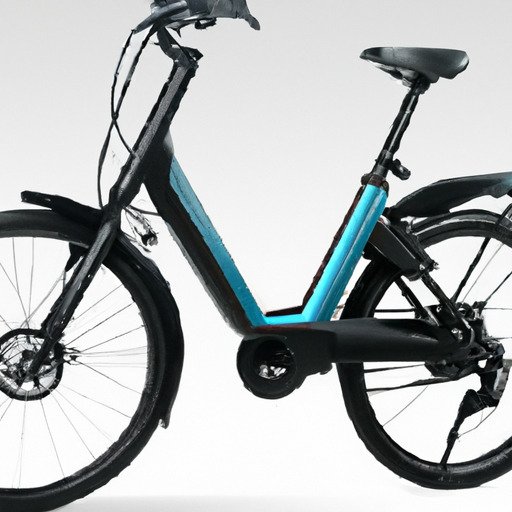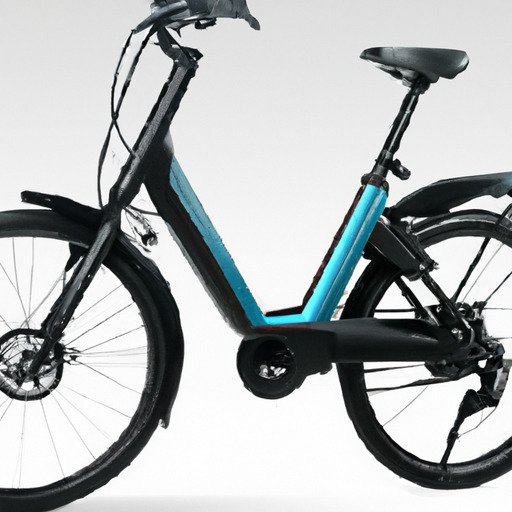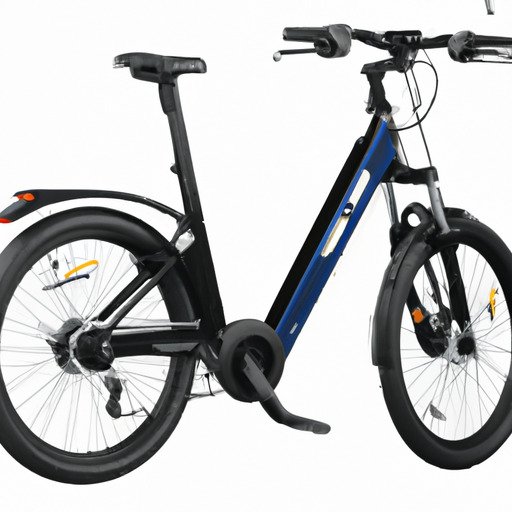
Have you ever wondered if there are any government incentives for purchasing e-bikes? Well, you’re not alone. With the rising popularity of electric bicycles, more and more people are looking for ways to save money and reduce their carbon footprint. In this article, we’ll explore whether or not there are any government incentives available for those who choose to buy e-bikes. So, if you’re considering getting yourself an electric bike, stick around because you might just discover some great incentives that could make your decision a lot easier.
Curious to know if there are any government incentives for purchasing e-bikes? We’ve got you covered. In this article, we’ll delve into the world of electric bicycles and explore whether or not there are any benefits or incentives offered by the government for those who decide to make the switch. Whether it’s financial incentives, tax credits, or other benefits, we’ll provide you with all the information you need to make an informed decision. So, if you’re interested in getting yourself an e-bike, keep reading because we’re about to reveal some potentially exciting incentives that could sweeten the deal.
Overview of E-bikes
E-bikes, also known as electric bikes, are bicycles that are equipped with an electric motor to assist with propulsion. They are gaining popularity around the world as a convenient and environmentally friendly mode of transportation. E-bikes come in various types, such as pedal-assist e-bikes, throttle-controlled e-bikes, and electric mountain bikes.
Benefits of using e-bikes
There are many benefits to using e-bikes. Firstly, they are a great alternative to traditional bikes for people who may not have the stamina or physical ability to pedal long distances. The electric motor provides assistance, making cycling easier and more accessible for individuals of all fitness levels.
E-bikes also offer a faster and more efficient mode of transportation, especially in urban areas with heavy traffic. They allow you to travel longer distances without getting tired, making them a viable option for commuting or running errands. Additionally, e-bikes can save you money on fuel costs and parking fees, making them a more economical choice compared to cars or motorcycles.
Furthermore, e-bikes promote active transportation and physical health. While the electric motor provides assistance, riders still need to pedal, which provides exercise and helps improve cardiovascular fitness. Regular cycling can also help with weight loss and reduce the risk of chronic diseases such as heart disease and diabetes.

Increasing popularity of e-bikes
In recent years, e-bikes have seen a surge in popularity. Their versatility and ease of use have made them appealing to a wide range of individuals. E-bikes are particularly popular among commuters who want to avoid traffic congestion and reach their destinations quickly and conveniently.
Moreover, e-bikes have gained recognition as a sustainable mode of transportation. They produce zero emissions when operated solely on electric power, making them an eco-friendly alternative to cars and motorcycles. With the growing concern about air pollution and climate change, more people are embracing e-bikes as a greener transportation option.
Government initiatives for promoting e-bikes
Recognizing the numerous benefits of e-bikes, governments around the world have implemented various initiatives to promote their adoption. These initiatives aim to incentivize the purchase and use of e-bikes by offering financial and infrastructure support.
National policies and programs
Many countries have introduced national policies and programs to encourage the use of e-bikes. These initiatives often include funding for research and development of e-bike technology, as well as awareness campaigns to educate the public about the benefits of e-bikes. Governments may also work with industry stakeholders to establish safety standards and regulations for e-bikes.
State and local government incentives
In addition to national programs, state and local governments also play a crucial role in promoting e-bikes. They may offer incentives such as tax credits, rebates, or discounts on e-bike purchases. Some cities and municipalities even provide subsidies for e-bike rentals or offer bike-sharing programs, making e-bikes more accessible to a broader population.
Tax incentives for e-bike purchases
Tax incentives are another common method used by governments to encourage e-bike adoption. In some countries, individuals purchasing e-bikes may be eligible for tax credits or deductions. These incentives can significantly reduce the cost of purchasing an e-bike, making it a more attractive option for potential buyers.

Financial incentives for e-bike purchases
Governments also provide financial incentives to encourage the purchase of e-bikes. These incentives aim to make e-bikes more affordable and accessible to a wider audience.
Rebates and grants for e-bike buyers
Many governments offer rebates or grants to individuals who purchase e-bikes. These financial incentives can help offset the initial cost of buying an e-bike, making them more affordable for consumers. Rebates may be offered as a percentage of the bike’s purchase price or as a fixed amount.
Low-interest loans for e-bike purchases
Low-interest loans are another financial incentive that governments provide for e-bike purchases. This allows individuals to spread out the cost of buying an e-bike over time, making it more manageable for those on a limited budget. These loans typically have favorable repayment terms and lower interest rates compared to conventional loans.
Subsidized e-bike leasing programs
Some governments have introduced subsidized e-bike leasing programs to further promote their adoption. These programs allow individuals to lease an e-bike at a reduced cost, often with the option to purchase the bike at the end of the lease term. Subsidized leasing programs make e-bikes more accessible and affordable, particularly for those who may not have the means to purchase one outright.
Infrastructure support
To support the growing popularity of e-bikes, governments are investing in the development of e-bike infrastructure.
Development of e-bike infrastructure
Governments recognize the need for dedicated infrastructure to accommodate e-bikes. This includes the construction of e-bike lanes and paths, ensuring the safety of e-bike riders and separating them from other vehicles. Additionally, governments are working to improve e-bike parking facilities, allowing riders to securely park their e-bikes when not in use.
Expanding bike lanes and parking facilities
In many cities, bike lanes are being expanded and integrated into existing transportation networks to accommodate e-bikes. This encourages more individuals to use e-bikes as a viable mode of transportation by providing safe and convenient routes. Moreover, governments are investing in bike-sharing programs, which provide easy access to e-bikes for short-term use.
Integration of e-bikes into public transportation systems
To further promote e-bike usage, governments are integrating e-bikes into existing public transportation systems. This can include providing e-bike charging stations at transit hubs or allowing e-bikes to be carried on public buses or trains. Such integration makes it easier for commuters to combine e-bike usage with other forms of transportation, enhancing the overall efficiency and convenience of their journeys.
Environmental and health benefits
The rising popularity of e-bikes is driven in part by the positive environmental and health impacts they offer.
Reduction in carbon emissions
E-bikes are a greener alternative to traditional motorized vehicles as they produce zero emissions when operated solely on the electric motor. By encouraging individuals to switch from cars or motorcycles to e-bikes, governments can significantly reduce carbon emissions and mitigate the effects of climate change. E-bikes also contribute to reducing traffic congestion, further improving air quality in urban areas.
Promotion of active transportation and physical health
Regular physical activity is essential for maintaining good health, and e-bikes offer an excellent opportunity for individuals to incorporate exercise into their daily routines. While the electric motor provides assistance, riders still engage in physical activity by pedaling. This promotes active transportation, contributing to improved cardiovascular fitness, weight management, and reduced risk of chronic diseases.
Improving air quality in urban areas
With the increasing number of cars and motorcycles on the roads, air pollution has become a significant concern in many urban areas. By promoting e-bikes as a means of transportation, governments can help address this issue. The use of e-bikes reduces the emissions of pollutants such as carbon monoxide and nitrogen oxides, leading to cleaner air and better overall air quality in cities.
Case studies and success stories
Several cities around the world have implemented successful e-bike incentive programs, resulting in increased e-bike adoption and numerous positive outcomes.
Examples of cities with successful e-bike incentive programs
Amsterdam, Netherlands, is often cited as a prime example of a city with a successful e-bike incentive program. The city government has invested in e-bike infrastructure, including bike lanes and parking facilities. They also provide financial incentives, such as tax credits and subsidies, to encourage e-bike purchases. As a result, Amsterdam has seen a significant increase in e-bike usage, reducing traffic congestion and improving air quality.
Impact of government incentives on e-bike adoption rates
Studies have shown that government incentives play a crucial role in increasing e-bike adoption rates. In cities where financial incentives and infrastructure support are provided, more individuals are willing to switch to e-bikes as their primary mode of transportation. The availability of subsidies, rebates, and grants significantly reduces the financial barrier to entry and encourages more people to consider purchasing an e-bike.
Success stories of individuals benefiting from government incentives
Many individuals have experienced the positive impacts of government incentives for e-bike purchases. For example, John, a daily commuter, was hesitant to switch to an e-bike due to cost concerns. However, with the introduction of a government rebate program, he was able to receive a significant discount on his e-bike purchase, making it affordable for him. John now enjoys the convenience and health benefits of commuting on an e-bike.
Challenges and limitations
Although government incentives for e-bike purchases have proven effective, there are several challenges and limitations that need to be addressed.
Financial constraints and limited funding
One significant challenge is the financial constraints faced by governments in implementing and sustaining e-bike incentive programs. Funding for these initiatives may be limited, making it challenging to provide substantial financial incentives for e-bike purchases. Governments need to carefully allocate resources to ensure the optimal utilization of funds for the greatest impact.
Resistance from traditional transportation industries
The introduction of e-bikes as a viable mode of transportation has faced resistance from traditional transportation industries, such as car manufacturers and oil companies. These industries may lobby against e-bike incentives, as increased e-bike adoption could potentially reduce their market share and revenue. Governments need to remain firm in their support for e-bikes and address concerns raised by these industries.
Lack of standardized policies and regulations
The lack of standardized policies and regulations across different jurisdictions poses a challenge for e-bike adoption. E-bike regulations vary widely, creating confusion for both manufacturers and consumers. Governments need to work towards establishing uniform policies and safety standards to ensure the safe and efficient operation of e-bikes.
Comparative analysis of global government incentives
Across the globe, different countries have implemented a variety of approaches to incentivize e-bike purchases.
Examining different countries’ approaches to e-bike incentives
Countries such as the Netherlands, Germany, and China have been at the forefront of e-bike adoption and have implemented comprehensive incentive programs. These programs include financial incentives, infrastructure development, and supportive regulations. By examining the approaches taken by these countries, other governments can learn valuable lessons and tailor their own e-bike incentive programs accordingly.
Evaluation of the most effective incentive strategies
To determine the most effective incentive strategies, governments should evaluate the outcomes of their e-bike incentive programs. Collecting data on e-bike adoption rates, reduction in carbon emissions, and improved public health can provide insights into the impact of different incentives. This evaluation can help governments refine their programs and allocate resources more effectively.
Lessons learned from successful e-bike incentive programs
Successful e-bike incentive programs can provide valuable lessons for other governments looking to promote e-bike usage. Key lessons include the importance of infrastructure development, financial incentives, and public awareness campaigns. Governments can learn from these experiences and tailor their programs to suit their specific contexts and challenges.
Future outlook and potential improvements
The future outlook for e-bike adoption is promising, with an anticipated increase in their popularity and usage.
Anticipated growth in e-bike adoption
As more individuals recognize the benefits of e-bikes and governments continue to support their adoption, the future growth of e-bike usage is expected to be significant. E-bikes will continue to gain popularity as a sustainable mode of transportation, especially in urban areas where traffic congestion and air pollution are pressing issues.
Potential enhancements to existing government incentives
To further encourage e-bike adoption, governments can consider enhancing existing incentives. This could include increasing funding for financial incentives, expanding e-bike infrastructure, and collaborating with private sector partners to provide additional benefits for e-bike owners.
Integrating e-bikes into smart city initiatives
E-bikes can play a crucial role in smart city initiatives that aim to improve urban mobility and reduce environmental impact. By integrating e-bikes with other modes of transportation and incorporating smart technologies, governments can further enhance the convenience and efficiency of e-bike usage.
Conclusion
In conclusion, government incentives for purchasing e-bikes are available in many countries around the world. These incentives include financial support, infrastructure development, and regulatory measures. E-bikes offer numerous benefits, including improved accessibility, reduced carbon emissions, and positive impacts on public health. By implementing and enhancing these incentives, governments can further promote e-bike adoption and contribute to a more sustainable and healthier future. So, if you’re considering purchasing an e-bike, be sure to explore the various government incentives available to you. Happy cycling!




















